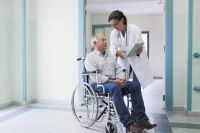Clinical Decision Support (CDS) systems are pivotal in the digital transformation of healthcare, designed to enhance clinical decision-making and improve patient outcomes. Despite their potential, real-world adoption remains suboptimal, with utilisation rates falling short of expectations. Traditional reviews have offered insights into adoption challenges but often treat influencing factors as static, overlooking the evolving nature of both technology and user experience. A recent systematic review addressed that gap by analysing how clinician acceptance and use of CDS systems in hospital settings change across various implementation stages—from early adoption to long-term use.
Dynamic Factors Shaping Initial Adoption
In the first six months following CDS implementation, acceptance hinges predominantly on factors linked to the system itself and its immediate integration within clinical workflows. During this period, the intervention domain, covering aspects such as system utility, simplicity and interface design, is the most frequently reported source of both facilitators and barriers. Ease of use, perceived usefulness and alignment with existing clinical tasks are critical for encouraging uptake. Simultaneously, institutional factors—particularly how well the system fits into the existing work culture and operational procedures—play a supporting role.
Interestingly, early outcome perceptions also feature prominently. Clinicians’ initial experience of the CDS’s impact on patient care and workflow efficiency can influence their willingness to continue using it. Where systems offer tangible improvements in clinical practice, enthusiasm tends to grow. Conversely, frustrations due to poor integration, alert fatigue or inadequate training can create resistance, even among initially receptive users. These early experiences are pivotal in setting the tone for future engagement and must be proactively managed with responsive support structures and clear communication.
Mid-Term Use: Shifting Focus to Personal and Cultural Adaptation
Between seven months and two years post-implementation, the locus of influence expands beyond system features. While intervention and workflow alignment remain significant, individual-level factors increasingly determine whether CDS becomes embedded in daily practice. Trust in the system, confidence in interpreting its recommendations and perceived autonomy while using it gain prominence. The interplay between a clinician’s belief in the technology and their sense of ownership becomes crucial in sustaining engagement.
Organisational context also begins to evolve in relevance. After the initial adjustment period, systemic incentives, leadership endorsement and access to technical resources become either enablers or obstacles. The role of peer networks and professional culture grows, as clinicians are influenced by how colleagues perceive and interact with the system. In some settings, the emergence of workarounds—unofficial strategies to bypass CDS limitations—signals underlying friction between system design and frontline realities. This period is marked by the tension between standardisation and professional judgement, where systems that accommodate flexibility and contextual use tend to fare better.
Long-Term Engagement and Sustained Use
Beyond two years of use, particularly after five years, CDS engagement reveals deeper patterns of adaptation and resilience. Here, factors from the inner setting—such as governance structures, workflow institutionalisation and long-term support—gain relative prominence. The novelty of the system has worn off, and sustained use is shaped less by initial impressions and more by how well the system has matured within the organisational fabric.
Must Read: Advancing Clinical Decisions through Digital Innovation
Notably, strategies developed by clinicians to navigate system limitations, such as selective alerting or layered decision-making protocols, become more prevalent. These adaptations illustrate both user ingenuity and the need for continued system evolution. Long-term users often blend CDS insights with experiential knowledge, adjusting usage based on case complexity or patient characteristics. At this stage, success is often contingent upon the degree to which CDS systems have been iteratively improved in response to clinician feedback and changing clinical environments.
Interestingly, individual-level factors such as confidence and habitual use remain relevant, but they are framed within a broader organisational culture that either supports or undermines ongoing engagement. Interventions that have succeeded over time often benefit from structured feedback loops, regular system updates and clear governance protocols that ensure alignment between technological functionality and clinical reality.
Clinician interaction with CDS systems is not a one-time event but a longitudinal process marked by shifting priorities, evolving needs and growing complexity. From early concerns about usability and workflow integration to later-stage adaptations rooted in cultural norms and individual practice patterns, the acceptance and sustained use of CDS systems depend on recognising these temporal dynamics. A static implementation strategy risks falling short; instead, hospitals must adopt a phased approach that aligns support mechanisms and system refinements with clinicians’ changing experiences. Only by embracing this lifecycle perspective can CDS fulfil its promise of enhancing clinical care and operational efficiency.
Source: npj digital medicine
Image Credit: iStock










